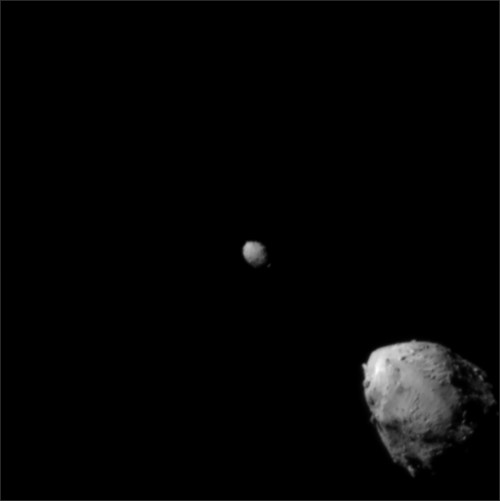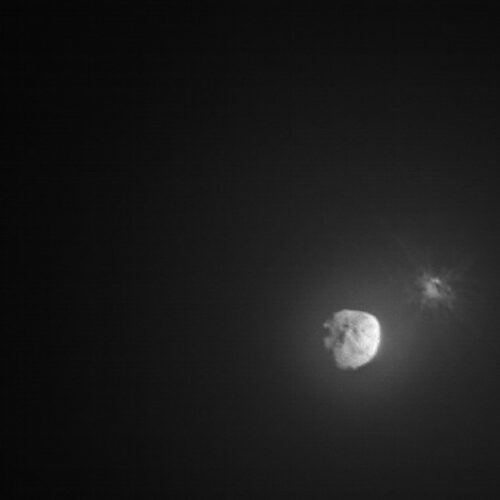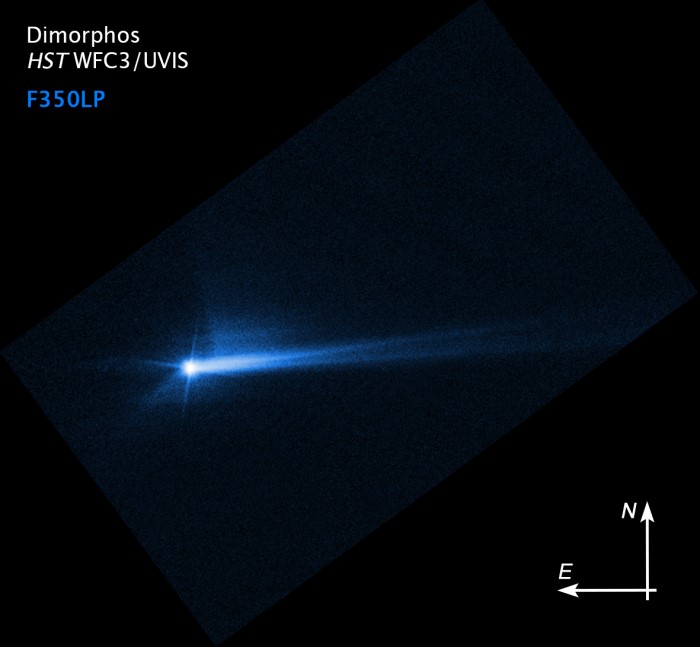Back on September 26, NASA spread the exciting news that one of their boldest ever experiments had 'made a connection'.
DART—the Double Asteroid Redirection Test—was a probe that was designed to crash. This washing machine-sized craft was sent toward an asteroid called Dimorphos, which was itself orbiting a larger asteroid called Didymos. The purpose? To see if it could shift Dimorphos' orbit path and change its direction.
September 26 that collision happened exactly as planned. Thanks to a couple of cameras (one on DART itself, and one on a smaller probe that joined it on its journey), NASA was even able to share a livestream of the impact.
Just making that impact happen was an amazing achievement. But the real achievement—moving the asteroid—was something we'd need to wait a while to confirm.
Now we finally know. DART did it! It moved Dimorphos!
As NASA put it in their press release: This marks humanity’s first time purposely changing the motion of a celestial object and the first full-scale demonstration of asteroid deflection technology.
Amazing!
Shrinking orbit

DART's view as it closed in on its target, Dimorphos. In the foreground is the larger asteroid, Didymos. (NASA)
Two weeks worth of data proves that the 'kinetic impact' (the force of the smashing) was enough to change Dimorphos' orbit around Didymos.
Prior to the impact, it completed a single orbit once every 11 hours and 55 minutes. But DART's collision shortened that orbit by 32 minutes, to 11 hours and 23 minutes. Basically, it took about a half hour off of the orbit time.
This shorter orbit means that DART moved Dimorphos closer to Didymos.
Future hope

This image was taken by the Italian satellite LiciaCube, which followed DART on its journey. You can see the debris flying off the smaller Dimorphos as DART scores a direct hit! (NASA)
Whether this particular mission was a success wasn't hugely important. Neither Dimorphos nor Didymos were in danger of hitting Earth.
And what's more, analysis of space hasn't found any asteroid that is on a collision course with our home planet.
But it has happened in the past. And it may happen in the future.
In the past, experts had suggested all sorts of possible defences, including using massive explosions and lasers to redirect or even blow up asteroids. But the solution offered by DART seems the best—it's an outer space bumper car!
NASA will be continuing its observation of Dimorphos, as well as thinking how to improve DART's design so that it can take on even larger asteroids.
 The Hubble Space Telescope took this image of a trail of debris flying off of-JPL/CalTech) Dimorphos after DART's impact. (NASA
The Hubble Space Telescope took this image of a trail of debris flying off of-JPL/CalTech) Dimorphos after DART's impact. (NASA










😀 😛 😯 😎 😮 🙂 😉
Amazing!!!!!!!
😁😮🙀
that was a AMAZING!!!
🫢😮😲🤯